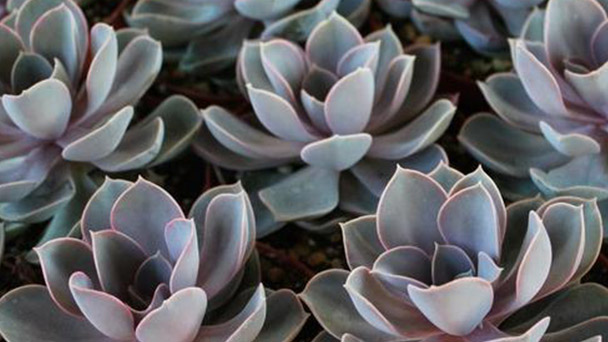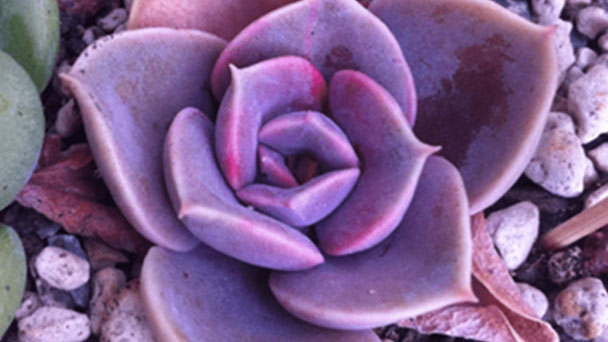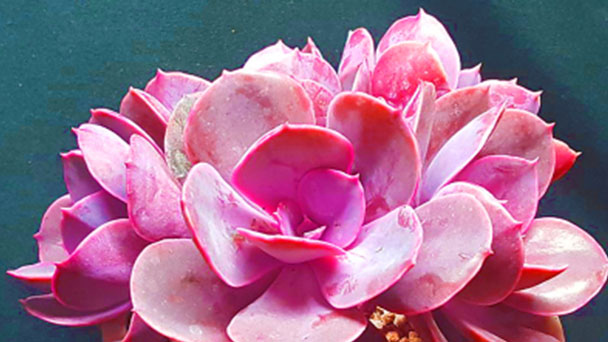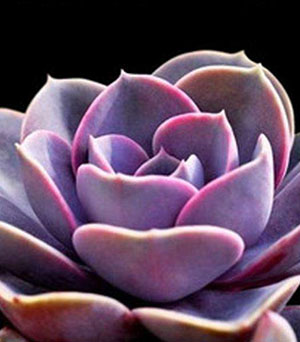Perle von Nurnberg profile
Written by Maggie
Dec 04 2020

Perle von Nurnberg, also known as the Nuremberg pearl, is a succulent of the genus Leonidopsis in the Sedum family.The violet leaves make this breed very ornamental.
Perle von Nurnberg is a succulent plant with beautiful pink-purple leaves with white margins.The leaves are spirally arranged in a rosette.
Perle von Nurnberg picture

Morphologic features of Perle von Nurnberg
The leaves of perle von nurnberg are very bright in sunny conditions with large temperature differences, but are dark green or greyish green in the growing season (usually summer) or under low light conditions.Stems emerge from the leaves in late summer and early autumn and bloom purplish
Perle von Nurnberg growth environment
Perle von Nurnberg likes light, warm, dry and ventilated environments. It likes light, drought resistant, cold resistant, shade resistant, indoor stuffy environments. It has strong adaptability, no resistance to hot sun exposure, no obvious dormant period. Perle von Nurnberg prefers cool, dry and sunny environments and well-drained sandy soil.
Perle von Nurnberg main value
Ornamental value.

Perle von Nurnberg breeding method
Perle von Nurnberg mainly had cutting, plant division, cutting leaf division and branch cutting.
Mature leaf cutting: the complete Perle von Nurnberg blade tile in moist sand, leaf up, back down. We don't need the overburden soil, place the shade, about 10 days from the leaf base can grow globular clusters and the new root, buried root, makes it back in the sun. With more appropriate watering, it gradually grows into a strong new strain.
Cuttings of branches can use Perle von Nurnberg or top branch. The length of cuttings is not limited, but the cutting edge should be dried. Remove the lower leaves, then insert sand bed, to avoid excessive water evaporation.Generally about 20 days after planting root, root can be watered;Before rooting, the bottom leaf withered and atrophic is a normal phenomenon. The root system grows well and will recover naturally after adequate water absorption.The soil should not be too wet, or it will be yellow and rotten.When the root length is 2-3 cm, the basin can be changed. It is best to divide plants in the spring.

Latest Updated
- Benefits of Bugleweed - 7 Science-backed Health Benefits
- Bugleweed Dangers & Side Effects - Is It Poisonous?
- How to Plant Evergreen Trees - What You Should Know
- When to Plant Evergreens - Grow Guide for Evergreen Trees
- 12 Wonderful Evergreen Shrubs for Your Garden
- 12 Popular Evergreen Plants with Pictures for Beginners
- When And How To Prune A Lilac Bush Like a Pro
- How to Grow & Care for Lilac Vine (Hardenbergia Violacea)
- Japanese Lilac Tree (Syringa Reticulata) Care & Propagation Guide
- Shumard Oak Pros and Cons - What to Know
Popular Articles
- Winter maintenance of Antirrhinum Majus
- How to Grow Terminalia Mantaly Tree
- How to Grow and Care for Crossostephium Chinense
- How to grow Antirrhinum Majus in spring
- Peristeria Elata (Dove Orchid) Profile: Info & Care Guide
- Underwatered Snake Plant (Sansevieria Trifasciata) - Signs And How To Fix
- How to Care for Brazilian Jasmine Plant (Mandevilla Sanderi)
- How to Grow & Care for Graptopetalum Purple Delight in Summer
- Rosa Chinensis (China Rose): Plant Growing & Care Tips
- How to Care for Baby Sun Rose (Aptenia Cordifolia)